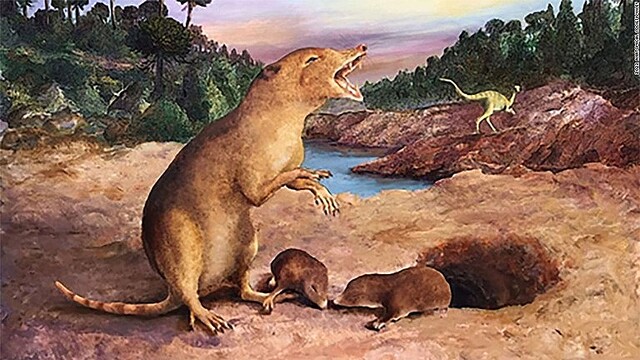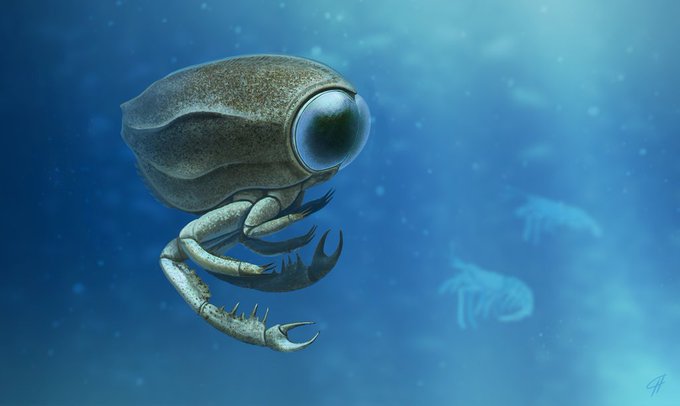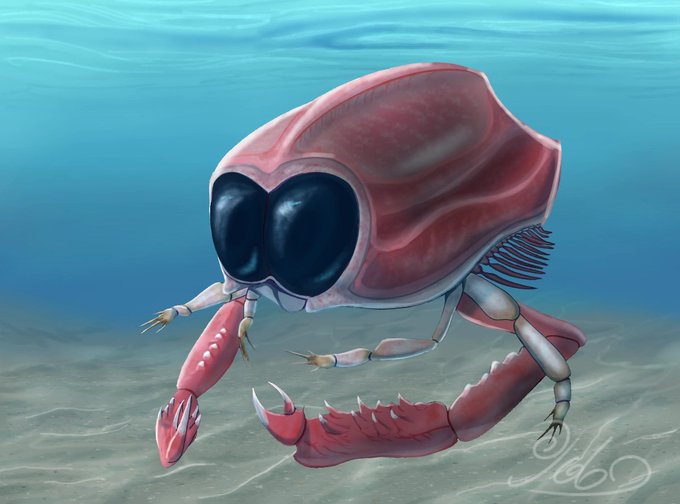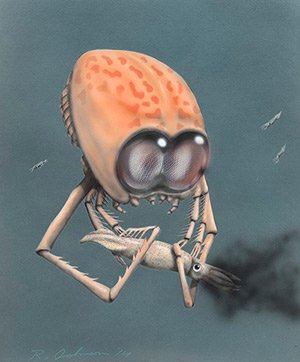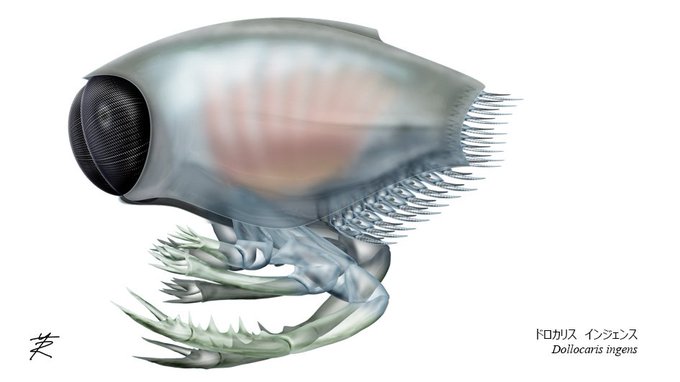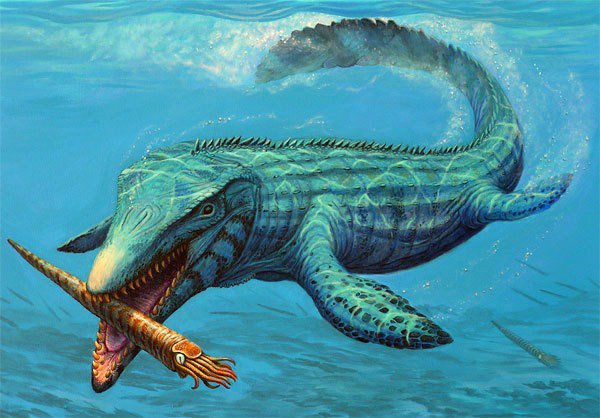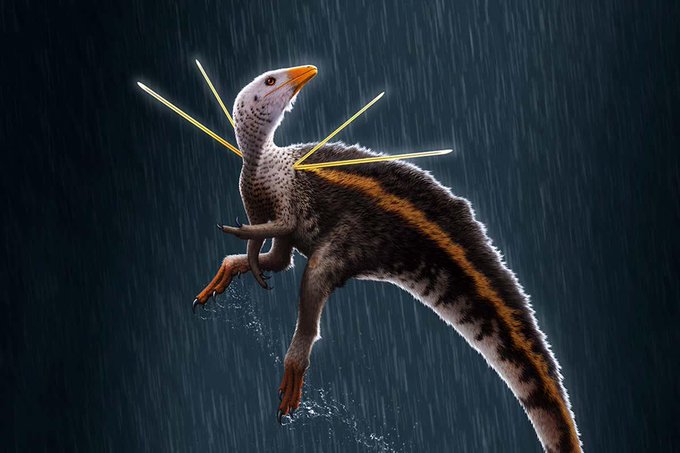251 million years ago, our planet was a barren wasteland, reeling from the most destructive mass extinction that it’s ever seen. Known as the Great Dying, this devastating event still isn’t fully understood, but one thing’s for sure, the Triassic period, the first of the Mesozoic era, was in full swing. Life was arduous, and only the strongest would thrive. In this battle for survival, one incredible creature would come out on top: the dinosaur. But what was their world like? How did they live? And what exactly led to their demise, if they even died out at all? Let's discover what Earth was like during the time of the dinosaurs!
Triassic Era
After the cataclysmic Great Dying, the Earth was left an incredibly inhospitable place. Life was bad! Real bad! But what little life was left struggled on, and 20 million years after the Great Dying, it was steadily spreading across the supercontinent Pangea. This was the Triassic Era.
Because of the various empty niches left in the wake of the apocalyptic extinction event, new life developed on land, sea and even the skies to fill them. The arid wastelands were gradually broken up by huge conifer forests, and eventually fern prairies. One group of land animals called the archosaurs were making a name for themselves, slowly rising to the top of the prehistoric charts. With upright limbs and a super-efficient respiratory system, they were primed for conquering the unwelcoming world they called home. But there was one specific group of archosaurs destined to rise above all the rest. Any guesses? Yes, dinosaurs! Though, at the time, dinos were small, mostly unremarkable creatures that did little to stand out. One of the first dinos ever was the Eoraptor. No taller than a chicken, it was once thought to be a carnivorous scavenger, but we now know it was probably a vegetarian, feasting on the new vegetation that sprang up across the globe.

But dinosaurs wouldn’t stay like this for long! They quickly began to evolve, gaining more opposable arms and stronger neck bones for supporting more muscle. These adaptations would lead to bigger, more imposing beasties like the Herrerasaurus stomping onto the scene.
At around 10 feet in length, this was one of the largest predatory dinosaurs of the time. It boasted powerful legs and clawed forearms, allowing it to keep pace and slash at its smaller prey. Like most early dinos, where exactly Herrerasaurus fits in the evolutionary journey of the species remains unclear. But it certainly set a standard for the carnivorous dinosaurs that’d come to stalk the Earth thereafter. Herbivores would only get bigger too! Meet the Plateosaurus, the first known veggiesaurus to get swole.

Coming in at 26 feet long, Plateosaurus was likely capable of rearing up on its hind legs to snag hard to reach vegetation. This would’ve been made even easier by its super long neck, something you may recognize from some later species! Overall though, dinosaur life was all pretty similar at the time, following a few basic blueprints, mostly bipedal, long tails, and long necks, though some longer than others! The dinosaurs were still a long way off from ruling the world. Elsewhere, there was another group of underdogs biding their time to clamber to the top:
mammals. Our own furry ancestors first appeared, the oldest seeming to be Brasilodon, a tiny mouse like insectivore.
But we’ll come back to our furry family in due time. There were many more bizarre animals roaming the Triassic wastes, one of the most notable being the Longisquama, a reptile with some seriously striking appendages on its spine.
Nobody really knows what they were for, or even what they were made of! Some believe them to be super elongated scales, others posit it could be one of the first known appearances of feathers. Speaking of feathers, what was going on in the skies? By the end of the era, there was a single species that had evolved the ability to fly, and by virtue, dominated the air: the pterosaurs! These reptiles boasted hollow bones filled with air, making them light enough to sustain flight, and with absolutely zero competition, the winds were theirs to conquer. One of the first pterosaurs was Eudimorphodon, a freaky looking fella with a long tail and strange teeth.

Seriously, its mouth was filled with all different types of gnashers, from sharp fangs to smaller, multi-pointed teeth. Given that, and its smaller size with a 3.3 foot wingspan, palaeontologists reckon it chowed down on small fish. Its large front teeth would have been perfect for snagging them, with its rear ones ideal for tearing into the fishy flesh. Primitive fish weren’t the only creatures patrolling the oceans. Marine reptiles first appeared in the Triassic era, the long-necked plesiosaurs and terrifying, fish-like ichthyosaurs being the most famous. Notably, the Triassic ichthyosaur Ichthyotitan is estimated to have reached lengths of 82 feet, making it the largest known predator to ever live.

These majestic creatures roamed the planet for millions of years. But around 201 million years ago, Pangea began to split apart. And as the landmass shifted, it triggered devastating volcanic activity that would bring doom to the Triassic. Four major volcanic eruptions occurred, dramatically cooling and then heating the atmosphere, causing forest fires and destroying 76% of all life on Earth. Even prolific land animals like apex predator Postosuchus were eradicated. Dinosaurs, however, managed to survive mostly unscathed. All that volcanism had initially thrown up huge amounts of sulphur and carbon dioxide into the atmosphere, blocking out the sun and causing an extremely cold volcanic winter which was responsible for the deaths of many species. Most dinos however had developed warm feathers in order to withstand the temperatures closer to the poles, where more lush vegetation was.

This adaptation probably saved them. And as it got warmer again, they were able to withstand the heat too. With whole swaths of competitors wiped away, the stage was finally set for them to rule. It was time for the
Jurassic period to begin.
Jurassic Period
As Pangea split, it formed two new continents, Laurasia and Gondwana. These land masses were separated by the prehistoric body of water known as the Tethys Ocean, and by the end of the period, the Atlantic Ocean would start to form. Various seaways and islands were created too, resulting in a brand-new landscape. And despite that volcanic winter, the long term effects of the end-Triassic extinction had significantly heated up the planet.
The now-tropical seas provided the perfect home for the evolving marine reptiles, which not only survived the Triassic extinction, but capitalized on it. The ichthyosaurs were no longer as large as their Triassic ancestors but continued to adapt, especially in the eye department. In fact, they’re known for having some of the largest in the animal kingdom. In particular, the Ophthalmosaurus.
At almost 9 inches in diameter, these eyes are the biggest of any reptile relative to its body length, around 19 feet, and would’ve allowed them to see prey in the darkest depths of the ocean. Meanwhile, the plesiosaurs got really scary. The long-necked types from the Triassic persisted, but they diversified into pliosaurs, hulking carnivores with shorter necks and bigger heads, like the intimidating
Liopleurodon.
But the seas were full of more than just reptiles and fish. Brace yourself, this is Dollocaris, and surprisingly it’s not an extra-terrestrial being. Their eyes were a whole quarter of its 8-inch length! Likely an ambush predator, Dollocaris would wait for unsuspecting prey to swim by, then use their grasping claws to snag them before chowing down! It may look like a crustacean, but in actual fact it was from a distantly related family known as the
thylacocephalans, now long extinct. These Jurassic creatures shared the waters with somewhat contemporary looking fish too, and the oldest known group of living sharks, the
sixgill sharks. All this new life was possible because of the warmer waters of the Jurassic!Back on dry land, the tropical climate had other dramatic effects. Flora exploded, and vast forests of more modern conifers grew, almost all the species we have today existed by the end of the Jurassic era! The lush landscape was also home to various ferns and ginkgoes, they’re all gymnosperms, plants with exposed seeds that rely on the wind to spread them. And with all these new plants around, there were plenty of critters ready to chow down on them, which were the dinosaurs! Dinos of the Triassic were incredibly hard to place in terms of classification due to how primitive they were. But by the Jurassic, these creatures had started to fit snugly into the iconic groups that would define them. For example, the
Lesothosaurus was one of the very first ornithischians, the group that includes Triceratops and Stegosaurus.
Lesothosaurus were small herbivores around 3 feet long and as tall as a chicken, likely living in herds to defend themselves from predators. All ornithischians evolved a bird-like hip bone, pointing down and back instead of forward.
Originally, it was thought to create more stomach space for digesting food, but these days people reckoned it might’ve helped with respiration. Whatever the reason, it was an adaptation that stuck with every future member of the order, so it must’ve been supremely useful. Combine this with extra specialized teeth perfect for grinding vegetation, and it’s no wonder this lineage wound up so successful.On the other hand, we have the
sauropods. These towering, long necked behemoths made their debut in the Early Jurassic, and they weren’t anything to scoff at back then. But by the Late Jurassic, some 160 million years ago, they were colossal. The most iconic of the time were the Brachiosaurus and the Diplodocus. Both herbivores, one was a vertical monster and the other was horizontal. Brachiosaurus used its huge, 50-foot neck to reach high vegetation. But it was also crazy long, coming in at 85 feet, almost as long as 2 semitrailers!
Even so, remarkably, Diplodocus had it beat! The longest specimen ever discovered was a gargantuan 108 feet long, half the wingspan of a Boeing 747! Comfortably the largest land animals to ever live, sauropods were effectively immune to predation and could keep on growing without fear!
But not all herbivores were that huge. So, how did the smaller ones defend themselves? Well, if you’re
Stegosaurus, you used a spiky tail called a thagomizer. By swinging their thagomizers, Stegosaurus could give any predators a nasty, momentum driven slash.
And although they weren’t as big as Diplodocus, they weren’t exactly small either, with some growing longer than a London bus! So, with big bulk and sharp tail spikes, they were certainly capable of defending themselves, even if they had brains the size of limes. As for the plates adorning its back, there are a few theories. Initially they were thought to be additional defensive tools, but these days that idea’s been refuted; the plates were probably too weak. Instead, they more likely used in mating displays, or to intimidate rival Stegos. So then, what sort of predators were stalking the Jurassic forests? One word:
theropods. This class contains pretty much every carnivorous dinosaur you can think of. In the case of the Jurassic, the top dog was probably the Allosaurus, and you wouldn’t wanna meet it. With a jaw crammed full of serrated teeth, forearms equipped with razor sharp claws, and powerful legs, this thing was built for aggressively pursuing its quarry. Think of it like a huge reptilian lion, capable of short bursts of speed, but not built for long chases.
Whether or not it was a social animal like lions is up in the air though. Some reckon they hunted in packs, working together to take down tough prey like Stegosaurus. Others think they were territorial loners, more likely to kill another Allosaurus than kiss it! The argument for the latter is convincing. After all, at 15 feet tall and up to 39 feet long, that’s a lot of dino to feed! It’s tough to imagine that there’d be enough grub to go around if they shared.
Also wandering the Jurassic was the Dilophosaurus, the iconic venom spitting frilled dinosaur from the Jurassic Park movies!
Jurassic Park: Dilophosaurus HD CLIP by Binge Society Only, sorry to burst any bubbles, but that’s a complete fantasy. There’s no evidence to suggest the Dilo had a frill or was capable of spitting venom of any kind. Also, unlike the movie depiction, it wasn’t a small predator, it was about as tall as The Rock and longer than one and a half VW Beetles!
But where did the venom idea come from? Well, the Dilophosaurus had a strange notch in its jaw, one that caused experts to initially question the strength of its bite force. If it wasn’t strong enough to deal with prey itself, it must’ve had some alternative hunting method, right? Hence, venom.
But without any actual evidence, it’s much more likely that the Dilophosaurus was either a scavenger that used its sheer size to intimidate other opportunists, or an expert fish hunter. That said, the jaws of Dilo have been assessed and reassessed, and scientists now think its bite was much stronger than they initially estimated. Either way, you would not wanna bump into this guy in a dark alley.
Elsewhere, other therapods were making some pretty spectacular leaps, straight into the skies! Meet the
Archaeopteryx, and despite only being the size of a magpie, it left an earthshattering impact on paleontology!
At the time of its discovery in 1861, Darwin’s theory of evolution had only just been written and was being hotly contested. Well, this striking dinosaur confirmed the theory! It evolved feathers and was capable of getting airborne, though whether that was via full flight or by gliding is unclear. Archaeopteryx represented a tangible example of evolution, here was a therapod that had developed a specific adaptation in response to its environment! At the time of its discovery, this was groundbreaking stuff.But despite old Archaeopteryx’s best efforts, the Jurassic skies were still ruled by the pterosaurs! Only now, there were a lot more of them. The Rhamphorhynchus was a small flyer with weird slanted and interlocking teeth, likely used to snag fish.
But just like their dino neighbors, as the Jurassic era stomped forwards the pterosaurs got bigger too!
Dearc sgiathanach was the biggest the Jurassic had to offer, about the size of a wandering albatross, the largest flying bird today. Just like Rhamphy, it had some funky snaggleteeth probably used for grabbing fish and squid from the ocean. Elsewhere, another breed of pterosaur that would go on to reach even greater heights: the pterodactyls. Unlike other pterosaurs, these guys boasted a short tail, longer hand bones and very often, an impressive crest for mating displays.
Pterodactylus was one such fella, and the namesake for the family. It seems these fish eaters also boasted a throat pouch, possibly to allow excess water to drain out when plucking their prey from the sea. Pterodactyls had rather unremarkable beginnings, but their true potential would be realized in the next period of Earth’s history. The same couldn’t be said for the mammals, who needed a little more time in the oven. Our ancestors diversified and thrived, evolving various new adaptations, climbing, burrowing, and gliding.

Many believe they were struggling to survive in a world that was dominated by dinos, but that definitely wasn’t the case! Though, they’d still have to wait beyond the end of the Jurassic for their true time to shine! You’re probably expecting me to mention some great cataclysm that rocked the globe again. But, surprisingly, no. The boundary between the Jurassic and the Cretaceous isn’t marked by any mass extinction event, and because of that, it’s been difficult to pin down.
Cretaceous Era
Scientists believe the Jurassic ended around 145 million years ago, but it’s a pretty arbitrary distinction. Changes from one period to the next were incredibly gradual, the late Jurassic and early Cretaceous probably looked seriously similar! Though it’s safe to say the Cretaceous wouldn’t stay that way for long. One key development was the evolution of flowering plants, and by extension bees to pollinate and help them spread! This would wind up one of the most impactful changes in the history of the planet.
As the Cretaceous went on, the continents continued to shift, slowly but surely beginning to resemble the ones we know today. These shifts pulled the Earth’s tectonic plates apart, creating pathways for magma to flow up from the Earth’s core and creating a wild number of volcanoes. And what follows volcanoes? Eruptions, lots of them. All those eruptions likely led to the massive global warming that was seen in this era. The Cretaceous may have been one of the warmest periods in Earth’s history. And all that rampant volcanism caused the ice caps to melt too, leading to a dramatic rise in sea levels. In fact, sea levels during this era were the highest in the history of the planet!
Naturally, with all that extra water, the marine reptiles were having a field day. A new dominant species emerged, the mosasaurs, predatory beasts with snake-like bodies that scoured the ocean floor for prey. Mosasaurs were incredibly successful, multiplying across the seas and thriving for the entire era. But none were as successful as the Mosasaurus. This colossal predator is thought to have hit lengths of 56 feet! That’s three giraffes! Not that mosasaurus was anything like giraffes. As apex predator of the Cretaceous oceans, they fed on basically everything, fish, ichthyosaurs, plesiosaurs, and even other mosasaurs! Another, less horrific Cretaceous critter was the Archelon, the largest sea turtle to ever live!

At a glance, you’d be forgiven for thinking it looks pretty similar to modern day sea turtles, until you realize that these guys reached 15 feet in length and weighed over 4,500lbs. In the skies above the waters, the pterosaurs, and especially the pterodactyls, had finally hit peak performance. The iconic
Pteranodon soared through the air, feasting on fish from the water beneath. With a wingspan of 23 feet, pterosaurs had never been so huge! But Pteranodon wasn’t the biggest. Allow me to introduce you to Quetzalcoatlus, possibly the
largest animal to ever fly.
Standing, it was as tall as a giraffe, and with a 40-foot wingspan. This pterodactyl must’ve looked like a demon. It’s incredible to even conceive that the beast could get airborne. It likely fed on lizards, small dinosaurs and other tiny game, which it swallowed whole. But the skies weren’t the only place populated by incredible non-dinos!On dry land, the plant life remained largely the same, apart from the new flowering plants. However, many animals, like snakes and lizards, evolved into more recognizable forms. Some of these were less cute critter and more prehistoric monster. This is
Beelzebufo, also known as the Devil Frog.
How did it get that name? Well, no reason. Only that it chowed down on flipping dinosaurs. Baby dinosaurs, sure, but still! This thing was almost definitely the largest frog of all time, coming in at almost 1.5 feet long! The Devil Frog wasn’t the only animal that made dinosaurs its dinner though. Crocodilians and their relatives also thrived in the Cretaceous. And unlike Beelzebufo,
Deinosuchus dined on fully grown dinos!
Possibly the largest crocodilian to ever live, this titanic gator was as tall as a grown man and 40 feet in length, maybe even longer! Yet, paleontologists reckon it could still effectively hide in bodies of water like lakes and leap out to attack unsuspecting dinosaurs as they bent down to drink. Fossils of some of the biggest, baddest dinos of the era have been discovered bearing Deinosuchus bite marks, meaning this guy had no fear at all! The Jurassic is often thought of as the age of giants, and to its credit it was the era where dinos started to get huge. But the Cretaceous is where things got kicked into overdrive! We’re not entirely sure why, though it could have something to do with the composition of the atmosphere at the time.
At any rate, the dinosaurs had existed largely uncontested in their niches for around a hundred million years by the mid Cretaceous. This allowed them to grow and adapt without fear, further perfecting their roles. And size usually means, power, protection and intimidation, and these guys were certainly intimidating! Remember those colossal sauropods from the Jurassic? Well, they were tiny children in comparison to the titanosaurs, extra extra jumbo sauropods. The biggest of all is likely to have been Argentinosaurus, at its biggest, it was 85 feet, almost as long as Ireland’s Ha'penny Bridge, and 65 tons, as heavy as a blue whale. Like the sauropods before it though, it was only interested in eating plant matter, utilizing that huge neck to munch from high up places.

But it wasn’t just the sauropods that grew. In the Cretaceous, the ornithischians evolved and diversified wildly. Some became ceratopsians: beaked, frilled dinos like Triceratops and Styracosaurus. These powerful creatures boasted hefty horns, making them more than capable of defending themselves from the deadliest preds of the era. Elsewhere, the
pachycephalosaurus appeared, bipedal creatures characterized by a thick bony skull that may have been used for self-defense or for head-butting rivals like an elk. But the most prolific were probably the
hadrosaurs, or duck-billed dinosaurs. Known as “the sheep of the Mesozoic,” herds of these herbivores were found all over the place! Unlike sheep though, they had bills filled with hundreds of teeth, perfect for snagging vegetation and grinding it down. Some, like the Parasaurolophus, boasted a magnificent, hollow head crest.
We’re not sure what it was for, but there are a few theories. It could’ve been used to communicate by blowing air through it, or as a form of temperature regulation, or it might even have been a built-in snorkel! And finally, the ankylosaurs hit their stride! We now know that these living tanks probably originated in the Jurassic era, but the Cretaceous is where they were most successful. The most well-known is probably the Ankylosaurus.
Despite being a herbivore it was coated in bony armor and sported a thick club at the end of its tail, so this is one dino that predatory therapods would be reluctant to mess with! That’s not to say that no therapods hunted these colossal armored beasts. The feathered dromaeosaurs stalked the land, using their oversized, curved foot claws to help latch onto difficult prey.

Though you might know these guys by another name: raptors! The super intelligent pack hunters of the Jurassic Park movies may just be pure fiction though. There’s limited evidence that they co-operated with each other at all, and while we believe them to have been pretty smart for a dinosaur, they weren’t exactly Einstein! These prolific hunters ranged from the turkey sized Velociraptor to the massive Utahraptor, which was as tall as a grown man! And some dromaeosaurs were probably capable of climbing trees, gliding, or even flying, so there’d be nowhere for prey to hide. Maybe the weirdest therapod of all though was the Ubirajara, a chicken sized freak characterized by its fur-like feathers and bizarre keratin shoulder spears. The spears could’ve been used to intimidate rivals or display for mates but were probably not weapons, they’d be way too impractical. Besides, the mini saurus seemingly fed on insects or small lizards. So, unless he wanted to skewer them and make a beetle kebab, there's not much use for them!

This was maybe the weirdest, because there were a few more misfits, such as the Deinocheirus. This omnivorous weirdo was the largest of its family, the ornithomimosaurs. Standing at over 15 feet tall and as long as a telephone pole, it was likely covered in feathers, with a huge humpback, spoon shaped bill, and long gangly arms ending in deadly claws. The name Deinocheirus means terrible hand, they were seriously scary! But there was one more therapod known for its terrifying claws, Therizinosaurus. Like some kind of giraffe-anteater-saurus, this nearly 20-foot maverick would likely have grazed on high up vegetation, using its colossal 3-foot claws to tear down branches. It probably also used them for self-defense, like a giant anteater in the modern day, capable of inflicting grievous wounds when threatened.
But this is the creature you’ve been waiting for.
Tyrannosaurus Rex. The tyrant lizard king. The biggest, baddest dino around. It wasn’t actually the biggest, but it was definitely bad!
40 feet long and as tall as two men, T-Rex was an active hunter with an advanced sense of smell to hunt down prey. When it caught them, its massive jaws were capable of biting down with more force than any other animal ever known.
And it had weird, tiny arms. Nobody knows for sure what they were for. Some reckon they were useful for slashing at prey while they clamped down with their mouth, others say they were for holding onto mates. But some believe they were just vestigial, a useless holdover that would’ve vanished entirely if they’d have continued to evolve. But if T-Rex wasn’t the biggest therapod, who was? Well, that would be the
Spinosaurus, but it was an altogether different beast! Spino didn’t spend much of its time pursuing ceratopsians or hadrosaurs, it was probably primarily a piscivore, or fish eater.

Don’t get me wrong, I doubt Spinosaurus would be opposed to chowing down on a conveniently placed dino – during times of drought it may even have been essential! But due to its dense bone structure, it would’ve found it relatively easy to submerge itself underwater to hunt. Whether it waded through lakes or swam though is up for debate. If it did swim, its huge sail and fin-like tail probably helped propel it through the water. However, it’s also possible the sail was used for temperature regulation or attracting mates. We just don’t know for sure! Mammals meanwhile evolved one key adaptation: a placenta. Used to nourish a fetus while it sits in the womb, basically all living mammals today share this trait. At this point, mammals had a lot of useful tools and all the potential in the world. All they needed was an opportunity to realize it, but that time wasn’t quite yet.The Cretaceous era would come to an end roughly 66 million years ago with the most well-known mass extinction in history. Towards the end, volcanic eruptions became ever more common and the outpouring lava sent heaps of CO2 into the atmosphere. Because of this, the ratio of oxygen in the atmosphere decreased, which some scientists believe caused many of the biggest dinosaurs to suffocate to death.
That said, the Cretaceous extinction is one of the most mysterious of mysteries. There are just as many that vehemently deny oxygen levels having anything to do with dino demise. Regardless, oxygen was far from the only problem. The continents continued to shift, disrupting and destroying whole ecosystems as they did.
Then, just when things seemed like they couldn’t get any worse, oblivion arrived from above. A colossal asteroid over 6 miles wide collided into the Earth, creating a crater 111 miles wide. Shockwaves were sent around the globe, causing wildfires, earthquakes, tsunamis, and all manner of catastrophic natural disasters. Unimaginable amounts of ash filled the atmosphere, blocking out the sun for months on end. In such diabolical conditions, up to 60% of plant life died, and every large animal was eradicated. Tiny creatures like mammals, lizards, snakes and fish survived, likely by hiding away underground or deep underwater.
But big marine reptiles like the plesiosaurs were destroyed, and pterosaurs were snuffed out entirely. And, of course, most dinosaurs went extinct too. Some dinosaurs survived the extinction! At least, one type did: the tiny, feathered theropods. Their size, again, allowed them to escape the harsh conditions and ride out the cataclysm. But what happened to them? Well,
they evolved into birds. That’s right! Dinosaurs eventually became the pigeons you see pooping on the sidewalk outside the kebab shop. How the mighty have fallen. In the aftermath of the apocalypse, the tiny animals that survived emerged from burrows to a dead world. The Mesozoic, the age of reptiles, was over. Finally, it was the mammals’ turn to rule the Earth, but that’s another story!
If you were amazed at when dinosaurs ruled the Earth, you might want to read about
Earth before the dinosaurs. Thanks for reading!




















